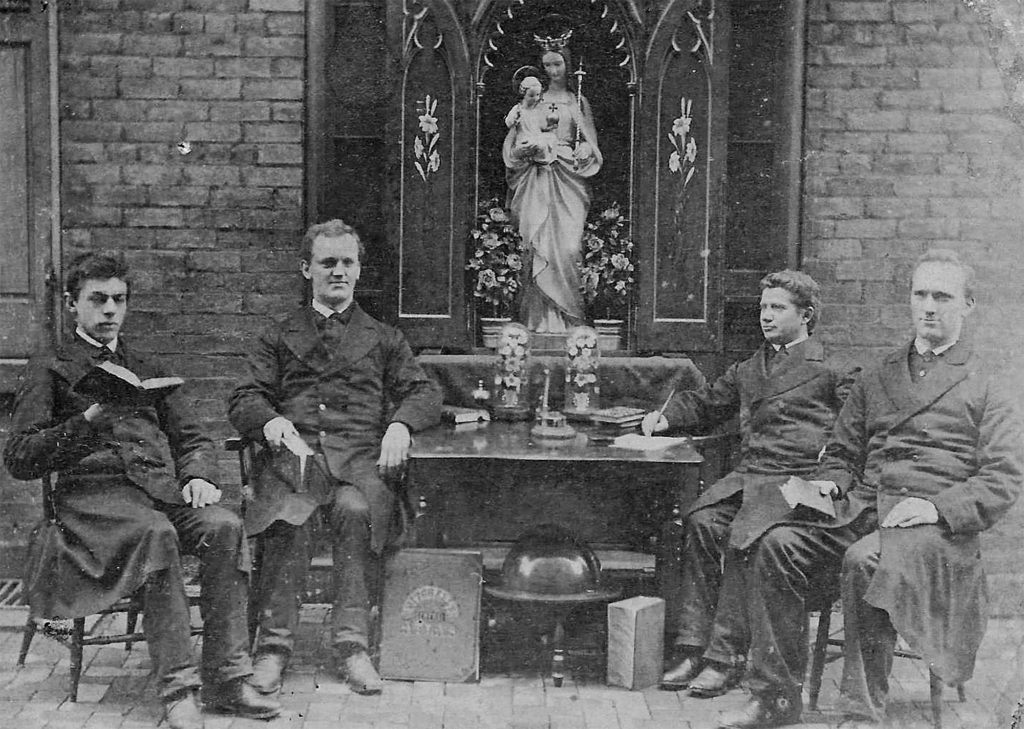A short history of the Society of Mary
The Society of Mary was formed in the wake of France’s bloody revolution (1789 – 1799). It was created to reawaken the Christian faith in a land where the Catholic Church had been sorely battered and destabilized.

In the early years of the revolution, William Joseph Chaminade, a diocesan priest, continued a clandestine ministry in Bordeaux. In 1797, Chaminade was driven into exile in Saragossa, Spain. There he prayed daily at the shrine of Our Lady of the Pillar, continuing a devotion to the Blessed Mother that was formed in the earliest days of his childhood.
During this time in exile, Chaminade conceived of a plan that would shape the rest of his life, and the lives of thousands to follow.
Upon his return to France in 1800, Chaminade began forming small faith communities called sodalities. Chaminade believed the Blessed Mother was the perfect model of discipleship, and so, in keeping with his plan, he placed these faith communities under Mary’s patronage.
Marie Thérèse Charlotte de Lamourous, who had served the underground Church during the revolution, was a close collaborator of Fr. Chaminade. In partnership with him, she helped form and guide the women’s sections of the sodalities.
By 1809, there were nearly 1,000 members in these sodalities, which were the earliest Marianist Lay Communities.
Through friends, Chaminade came into contact with a young woman named Adèle de Batz de Trenquelléon. Like Chaminade, Adèle was committed to the “mission of Mary.” In 1816, with support from Chaminade, Adèle founded the Daughters of Mary Immaculate, known now as the Marianist Sisters.
Just a year later, a group of male sodalists came to Chaminade with the goal of forming a religious institute under his direction. On October 2, 1817, these faithful men formed the Society of Mary. Like the Marianist Sisters, this congregation was pledged to carrying out Mary’s apostolic mission in the world. They committed themselves to forming others in faith, primarily through education.
In the ensuing decades, the Marianists spread across Europe, and across oceans. The Society of Mary now ministers in more than 30 countries across the globe.
Fr. Chaminade died in 1850; he was beatified by Pope John Paul II in 2000.
In the United States
The Marianists first came to the United States in 1849, landing in Cincinnati, Ohio. They moved north to Dayton, where they established St. Mary’s School for Boys in 1850. St. Mary’s would become the University of Dayton.

The Society of Mary grew and spread, continuing its primary focus of bringing others to Christ through education.
It established or staffed secondary schools in numerous states, and founded St. Mary’s University in San Antonio, Texas, in 1852, and established Chaminade University in Honolulu, Hawai’i, in 1955.
To administer the sprawling geography, there eventually were four U.S. Marianist provinces: Cincinnati (from the initial mission post), St. Louis (established 1908), Pacific (established 1948) and New York (established 1961).
The number of Marianists has decreased in recent decades, and the four U.S. provinces were consolidated in 2002 to create the Marianist Province of the United States.
There are approximately 200 Marianist brothers and priests in the Province of the United States today. The Province sponsors or co-sponsors a variety of ministries, including 18 secondary schools, three universities, four retreat centers and six parishes. The Province includes additional professed Marianists in India and Mexico.
Learn about vocations to the Society of Mary.
See an infographic about the Marianist family.
